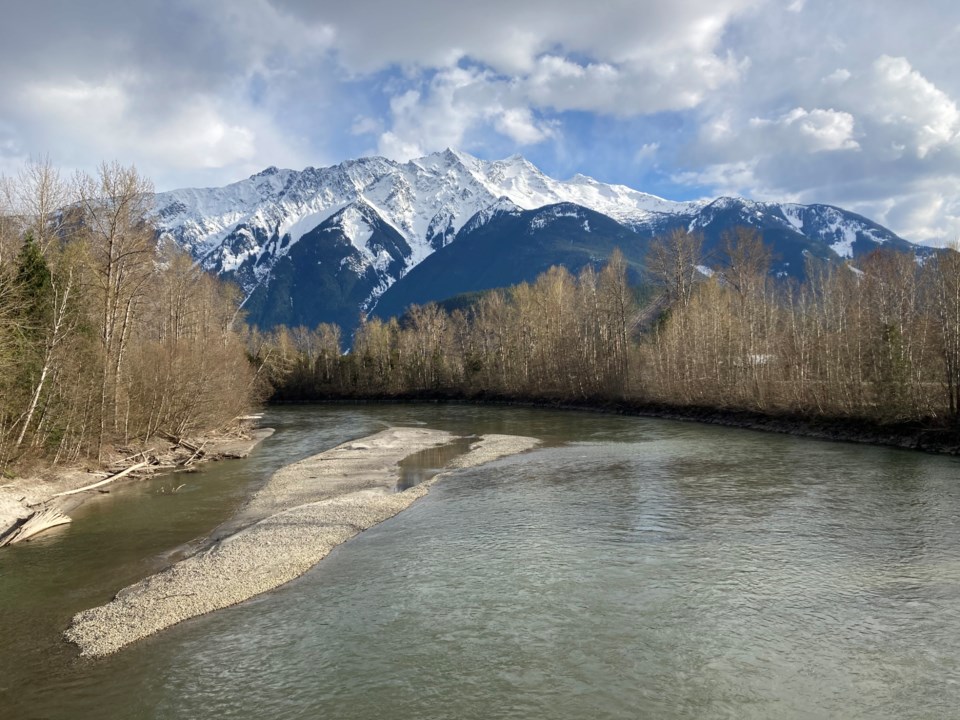Pemberton, Mount Currie and Whistler will be better prepared for wildfires thanks to new funding from the provincial government for fire mitigation work in the Cheakamus and Spel’kúmtn Community Forests.
On Nov. 28, the province announced through its Crown corporation, the Forest Enhancement Society of BC (FESBC), that it is investing $25 million into dozens of projects throughout the province, including two in the South Coast region.
The projects, to be completed by March 2024, will help reduce the risk of wildfires getting out of control and help improve local forests.
The Sea to Sky region received $818,551 for wildfire mitigation work—$635,095 went to the Cheakamus Community Forest for manual and mechanical treatments on land adjacent to the WedgeWoods subdivision north of Whistler, and $183,456 went to the Spel’kúmtn Community Forest for understory hand-thinning treatments in and around One Mile Lake Park.
Lil’wat Forestry Ventures forest manager Klay Tindall is grateful for the funding, as it will help protect many areas of cultural importance to the Lil’wat traditional territory.
According to Tindall, the area of One Mile Lake Park receiving understory treatment is a site frequented by Lil’wat Nation members and many others for recreational purposes.
“Keeping people and important infrastructure safe while being good stewards of the land to protect wildlife habitat, high cultural value areas and the traditional territory of the Lil’wat Nation are our key focuses. We are grateful for the funding to start the work,” Tindall said in a release.
The Spel’kúmtn Community Forest is a partnership between the Lil’wat Nation and the Village of Pemberton, and encompasses a total area of 17,727 hectares of land surrounding Pemberton and Mount Currie.
The planned mitigation work is crucial as the wildfire season continues to grow longer and more intense across the province due to climate change.
According to the Canadian Climate Institute, mitigation efforts such as these lead to direct benefits; for every $1 spent on mitigation, $10 to 15 is saved on direct and indirect costs from natural disasters, such as wildfires. British Columbia has already spent hundreds of millions of dollars rebuilding wildfire-devastated communities like Lytton and Monte Creek and highway infrastructure damaged by last year's atmospheric river.
Steve Kozuki, executive director of FESBC, is glad the funding is being spent in the region, as the wildfire mitigation efforts achieve a few different positive objectives, like reducing GHG emissions and increasing Indigenous participation in the forest economy.
“Their thoughtful and collaborative approaches result in numerous additional objectives also being achieved at the same time with the same funding: improved wildlife habitat; greater forest recreation opportunities; local employment; community economic benefits; forests that are more resilient to fire, insects, disease and future climate change,” Kozuki said.
Over the last five years, FESBC has approved 263 projects in 120 communities throughout the province. First Nations have led 63 projects, and another 23 have significant First Nations involvement.
The funding for the wildfire mitigation work is part of an ongoing investment by the provincial government to lessen the spread of wildfires that continue to devastate the province at an increasingly frequent rate.
In its 2022 budget, the province announced $359 million in funding to mitigate wildfire risk, including $145 million to strengthen the BC Wildfire Service and Emergency Management BC.
“The FESBC is a proven partner in delivering projects on the ground that protect people from wildfire risks and reduce emissions from slash pile burning,” said Katrine Conroy, Minister of Forests, in a press release.
“Along with the historic investments in budget 2022 to transform the BC Wildfire Service into a year-round service and double funding for proactive wildfire prevention, these new projects funded by FESBC will help build communities that are safer and more resilient to climate change."




